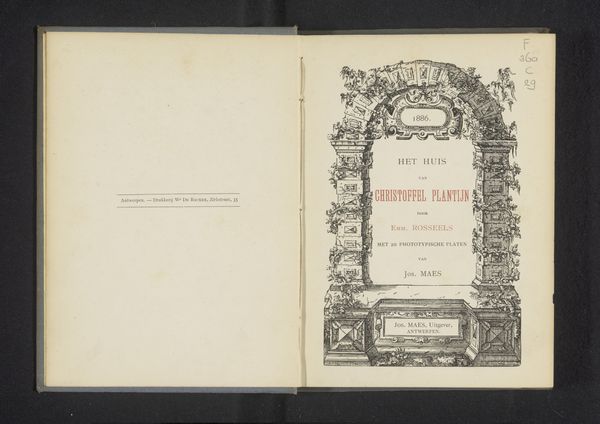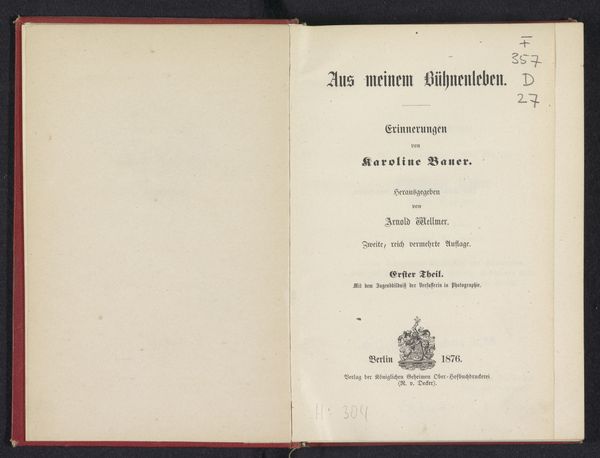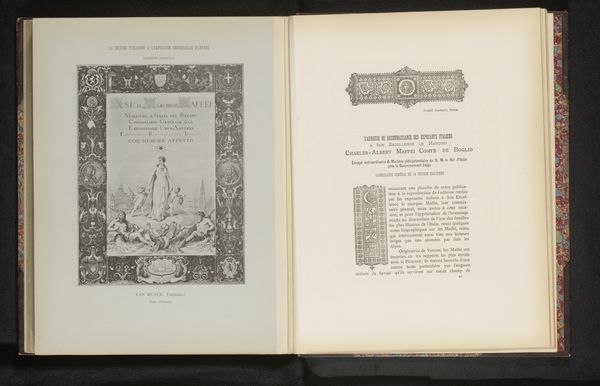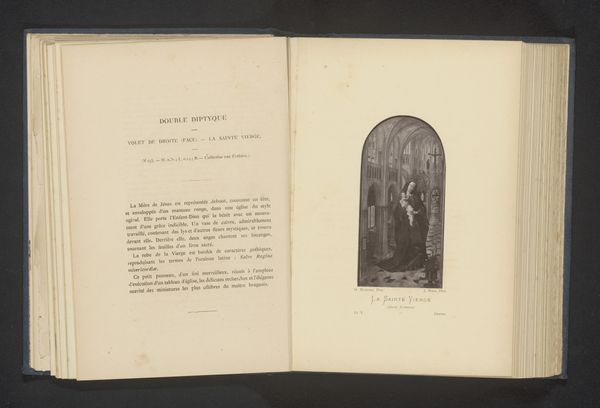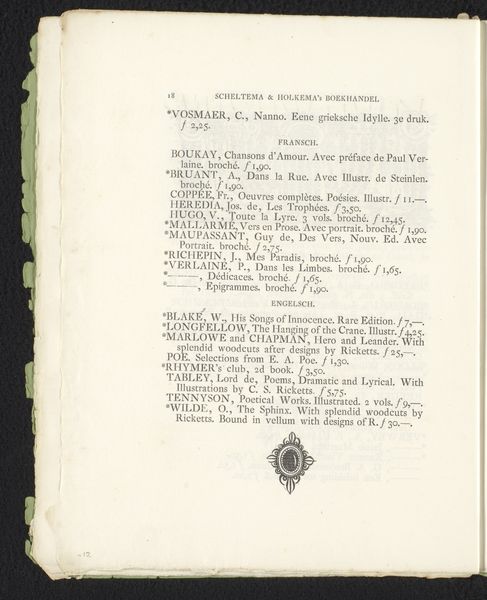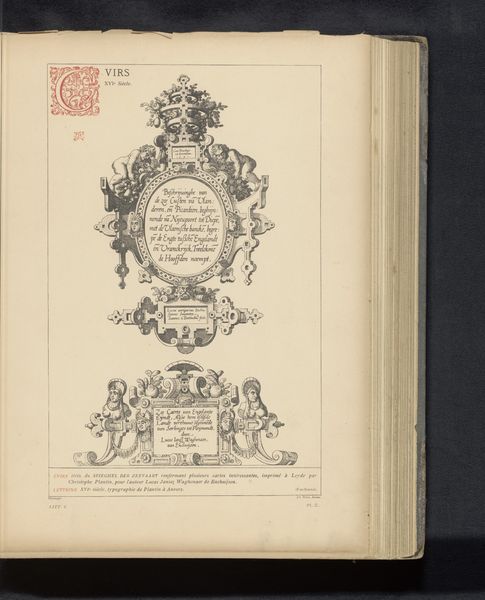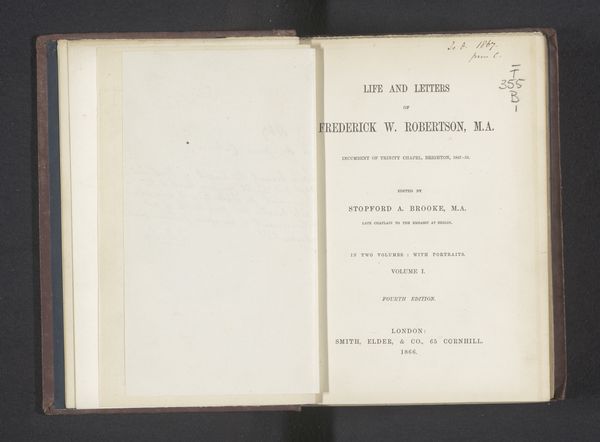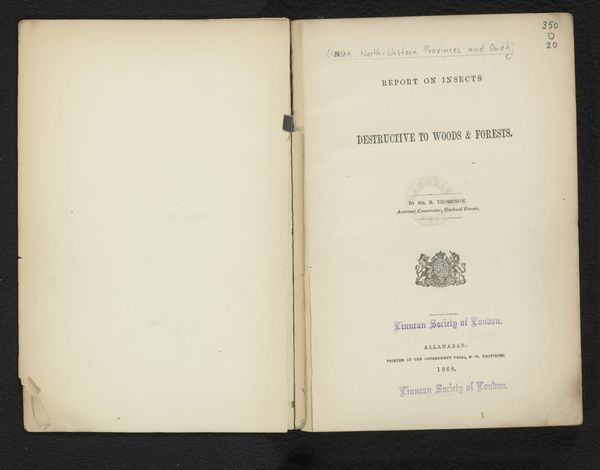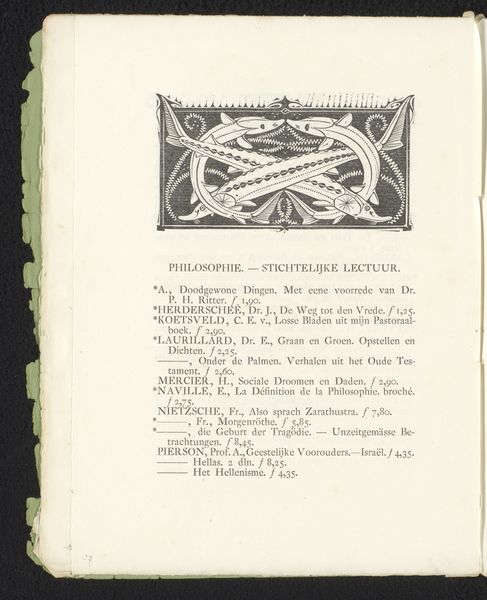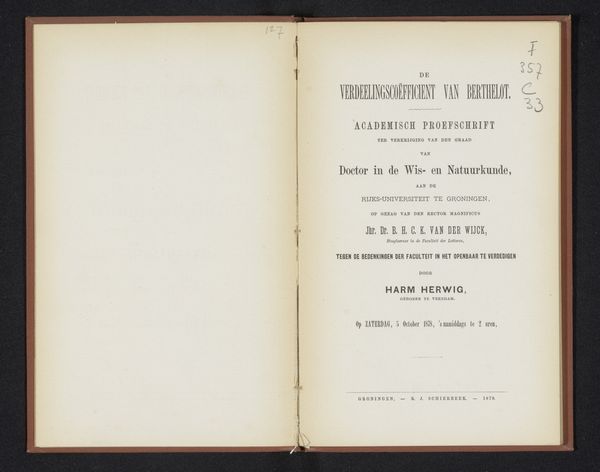
The four ministers round the Wrekin Buildwas, Haughmond, Lilleshull and Wenlock, with ground plans 1877
0:00
0:00
drawing, print, paper, ink, engraving
#
drawing
# print
#
paper
#
ink
#
engraving
Dimensions: height 285 mm, width 225 mm, thickness 20 mm
Copyright: Rijks Museum: Open Domain
Curator: This is a drawing, printed in 1877, entitled "The Four Minsters Round the Wrekin" by Mackenzie Edward Charles Walcott. It incorporates drawing and engraving on paper, using ink to depict the ground plans of Buildwas, Haughmond, Lilleshull, and Wenlock. Editor: My first impression is of aged, precise craftsmanship. The seals are finely rendered; you can sense the artist's meticulous process. There's an intentional starkness in the contrast of black and white, a lack of embellishment. Curator: Exactly, the lack of color lends a historical weight, immediately grounding the work in the period when documenting ecclesiastical architecture held considerable importance. What strikes me is the almost ritualistic placement of these religious sites around the Wrekin. They are not just geographic locations, but part of a connected network, symbolic of spiritual authority and its spatial control. Editor: I see that too, the placement is certainly deliberate. I'm intrigued by the choice of ink and engraving though. Why preserve this way? Engravings, with their capacity for multiple impressions, make historical knowledge and these locations available to a wider audience. It turns sacred spaces into accessible printed matter. Curator: Precisely. And if we consider the sociopolitical landscape of the late 19th century, it resonates with debates surrounding secularization. As traditional religious power faced challenges, preserving these representations in accessible print could be read as an attempt to safeguard and perhaps even reassert the presence of the church in the face of modern anxieties. The engravings could serve as a counter-narrative to narratives of religious decline. Editor: That is astute! It connects directly to the use of these older printmaking techniques too. It is very beautiful in how it elevates these historic materials. Curator: Thinking about it that way changes everything! It highlights both a cultural reverence for heritage and architecture but also maybe signals religious tension. Editor: Absolutely. Understanding both the artistic construction and how this image functioned gives us powerful insight. Curator: Agreed. There are definitely multiple perspectives here, making a richer view of 1870s England.
Comments
No comments
Be the first to comment and join the conversation on the ultimate creative platform.
